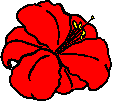 Shields
Gardens
Shields
Gardens
| Home |
| Daylilies |
| Rare Bulbs |
| Clivia |
| Seeds |
| E-Mail and Chat |
| Photo Gallery |
| Information |
| Sources |
| Guest Sites |
| Societies and Clubs |
| Links |
| People |
| About Us |
| Blogs |
Let's review the structure of a typical plant cell, just to get all of us on the same page. My page is likely to be 50 or so years out of date, but never mind that for now! If you already know what a plant cell is and how it is built, you should skip this article. If you find errors or serious omissions, you should contact the author right away, please.
A plant cell is surrounded by a non-living Cell Wall made of cellulose. This gives the cell its shape and protects it from outside damage. The cell wall is secreted by the living cell and can be remodeled by the living cell.
Inside the cell wall, the living cell is bounded by a Cell Membrane. This membrane is made of a double layer of phospholipid molecules. It is flexible but mostly impermeable to the molecules inside and outside the cell. Phospholipids are like biological detergent molecules: one end of the long molecule is soluble in oils and fat, the other end is soluble in water. A membrane has two layers of phospholipids, with the fatty ends facing each other and the water-soluble ends facing outward into the water.
Inside the cell membrane is the Cytoplasm, sometimes referred to as the cell sap.
The cytoplasm is full of structures that facilitate the functions of the cell. There are fibers or filaments of protein, the Microtubules, that move components around within the cytoplasm as the cell needs. There are also many protein molecules, the enzymes, and all the sugars, fats, and amino acids that contribute to the metabolic function of the cell.
The cytoplasm also contains various subcellular organelles, or structures smaller than the cell. The chromosomes and their genes are contained in the Nucleus. The nucleus is also bounded by a membrane that surrounds it. There is only one nucleus per cell.
Another organelle in the cell is the Mitochondrion. There are actually many mitochondria (the plural form) within a cell. The mitochondria are separated from the cytoplasm by a double membrane. This presumably reflects the origins of mitochondria and of chloroplasts as endosymbiotic bacteria that were completely taken over by the host cell a billion or two years ago. The mitochondria take the biochemical energy generated by the chloroplasts and use it for cellular metabolism.
A critical organelle in green plants is the Chloroplast, which contains the green chlorophyll. Photosynthesis is carried out in the chloroplast, and there can be many chloroplasts in a green cell. See also: Glossary.
A chloroplast that lacks green chlorophyll can still have carotenoid pigments. In that case, we call it a Chromoplast. A flower petal that is yellow has chromoplasts in the middle cell layers of the petal. See also: Glossary
Cells may also have one or more Vacuoles, which are bubbles of water within the cytoplasm and separated from the cytoplasm by another phospholipid membrane. The vacuoles will usually be free of microtubules and other proteins. Anthocyanin pigments are found in vacuoles. See also: Glossary.
The DNA of the cell is found mainly in the nucleus, but each mitochondrion and each chloroplast also has its own DNA molecule. The information needed to build and operate a living cell and its host organism is all stored in the sequence of bases in the DNA.
Jim Shields
For information about this account, contact:
James E. Shields, <shieldsgardens@gmail.com>, webmaster
Last revised: 30 December 2011
© Copyright 2011 by SHIELDS GARDENS LTD. All rights reserved.